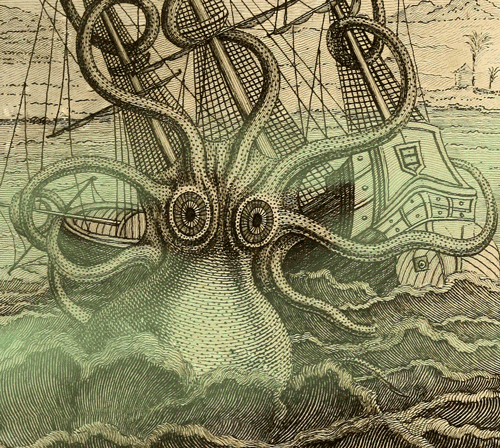#bhlMonstersRreal
Video
n104_w1150 by Biodiversity Heritage Library
Via Flickr:
An essay towards a natural history of serpents :. London :Printed for the author, sold by John Gray ...,1742.. biodiversitylibrary.org/page/38946323 An essay on the natural history of serpents from 1742 naturally must include an image of winged dragons! biodiversitylibrary.org/page/38946323 #bhlib
#Early works to 1800#Folklore#Religious aspects#Serpent worship#Serpents#Smithsonian Institution Libraries#bhl:page=38946323#dc:identifier=http://biodiversitylibrary.org/page/38946323#asp#dragon#bhlMonstersRreal#sea#serpent#Halloween#EarthDay#HistSciArt#PageFrights
4 notes
·
View notes
Photo

There are honest mistakes made by imaginative sailors who've been out to sea too long, and then there are "Jenny Hanivers." Ulisse Aldrovandi, who published this image in 1640, described it as "basilicus ex raia," indicating an awareness of the illegitimacy of the creature. Neither mermaids nor basilisks, the carcasses of dried rays or skates were mutilated to resemble human-fish hybrids, lacquered, and sold to tourists.
Follow #bhlMonstersRreal on Twitter and Facebook to learn more about the real animals that many legendary monsters are based on. See more historic monster illustrations from the Biodiversity Heritage Library.
GIF based on Aldrovandi, Ulisse. Serpentum, et draconum historiæ libri duo. 1640.
483 notes
·
View notes
Photo

"Release the Kraken!" In H. P. Lovecraft's short story "The Call of Cthulhu," Cthulhu (described as having a tentacled head) attacks a ship. The sailors try to kill the beast by ramming it repeatedly, but Cthulhu simply turns into green mist and reassembles. Follow #bhlMonstersRreal on Twitter and Facebook to learn more about the real animals that many legendary monsters are based on. See more historic monster illustrations from the Biodiversity Heritage Library.
GIF based on Montfort, Denys. Histoire naturelle, générale et particulière des mollusques : animaux sans vertèbres et a sang blanc. v. 2. 1801.
#bhlMonstersRreal#GIF#polpe colossal#Kraken#sea creature#green mist#old books#octopus#cthulhu#Halloween
468 notes
·
View notes
Photo

"Attack of the Sea Monster!" In 1555, Olaus Magnus published an image and description of the Soe Orm, which he claimed was a giant sea serpent 200 feet in length that lived near the shore or Bergen and came out at night to eat the farmers' livestock. His image and description was republished for centuries. Follow #bhlMonstersRreal on Twitter and Facebook to learn more about the real animals that many legendary monsters are based on. See more historic monster illustrations from the Biodiversity Heritage Library.
GIF based on Gessner, Conrad. Historia Animalium. 2nd ed. 1604.
#gif#bhlMonstersRreal#sea serpent#mythology#olaus magnus#horror#maybe cut back on the schnapps Olaus#Halloween
257 notes
·
View notes
Photo

Pristers, monsters actually identified as whales in historic publications, are reported to be mighty enough to sink the strongest ships. According to Olaus Magnus in his Carta Marina, cannon-fire was useless against these beasts. Instead, sailors should sound trumpets and throw barrels into the water to distract these monsters. Follow #bhlMonstersRreal on Twitter and Facebook to learn more about the real animals that many legendary monsters are based on.
There are even more historic monster illustrations in the Biodiversity Heritage Library.
GIF based on Gessner, Conrad. Historia Animalium. 2nd ed. 1604.
516 notes
·
View notes
Photo

Halloween is coming up, and there are MONSTERS everywhere! (or at least, there will be on our tumblr, and on the Biodiversity Heritage Library's blog and twitter....)
We're partnering with our friends at BHL to highlight the real origins of some legendary monsters. You can follow #BHLMonstersRreal and check their flickr collection of oddities for more.
Illustration of a "Fabulosus equus Neptuni" from
Pierre Belon's Cenomani De aquatilibus... (1553)
biodiversitylibrary.org/page/4770171
156 notes
·
View notes